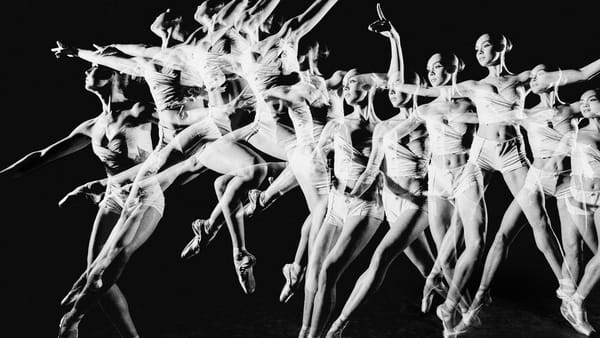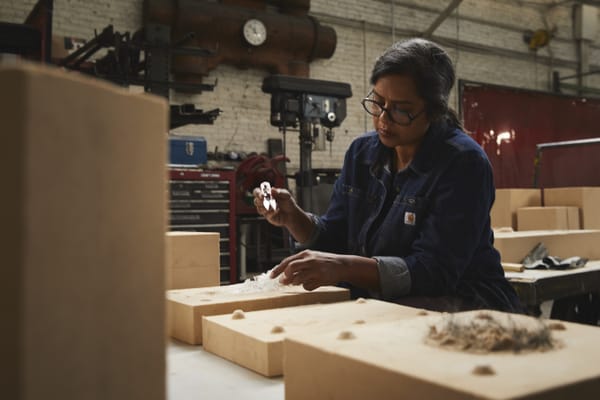A Hidden Times Square Sound Installation Returns to Full Hum
Max Neuhaus's "Times Square" sound installation is meant to be stumbled upon by visitors to the chaotic crossroads in Manhattan.
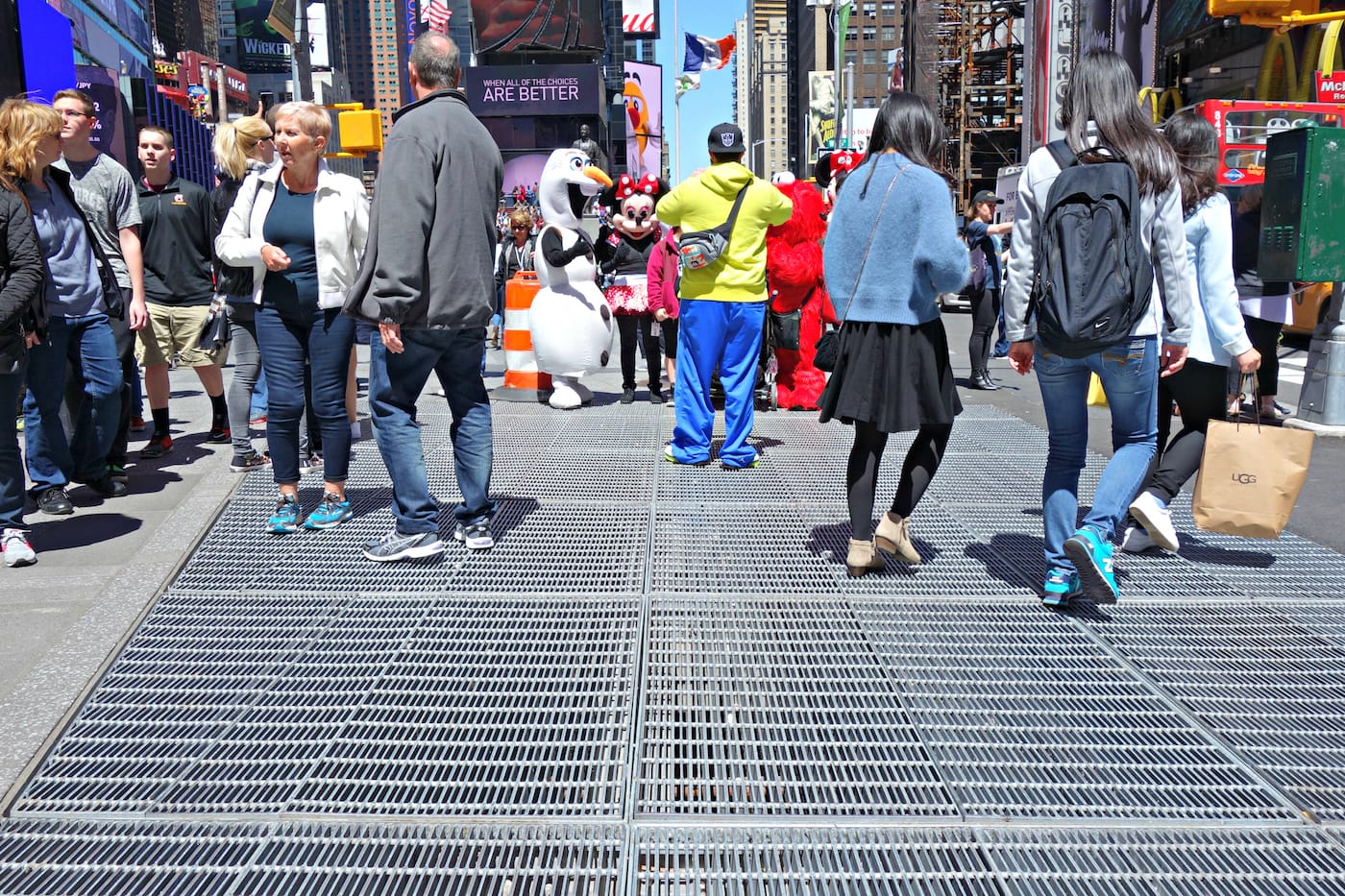
Max Neuhaus’s “Times Square” sound installation is meant to be stumbled upon by visitors to the chaotic crossroads in Manhattan. First installed from 1977 to 1992 beneath a metal vent, and later restored in 2002, the low, droning tones are not labeled anywhere as a work of art, and often blend into the 24-hour cacophony of Times Square. For much of last year, however, the experience, often nicknamed the “hum,” was inaccessible due to the ongoing Times Square redesign. Recently, the construction blockades were removed at the pedestrian island on Broadway between 45th and 46th streets, and now visitors can once again walk over the sonorous grate.
“The Neuhaus piece was actually never turned off,” Melissa Parsoff, director of communications and marketing at the Dia Art Foundation, which manages the site, told Hyperallergic. “During construction the island was fenced off. The closest you could stand was at the north end at 46th Street, several feet away from the grating at the spot where the speaker is located. So if you concentrated you could hear it, but it was probably hard to hear it well when there was work going on there.”
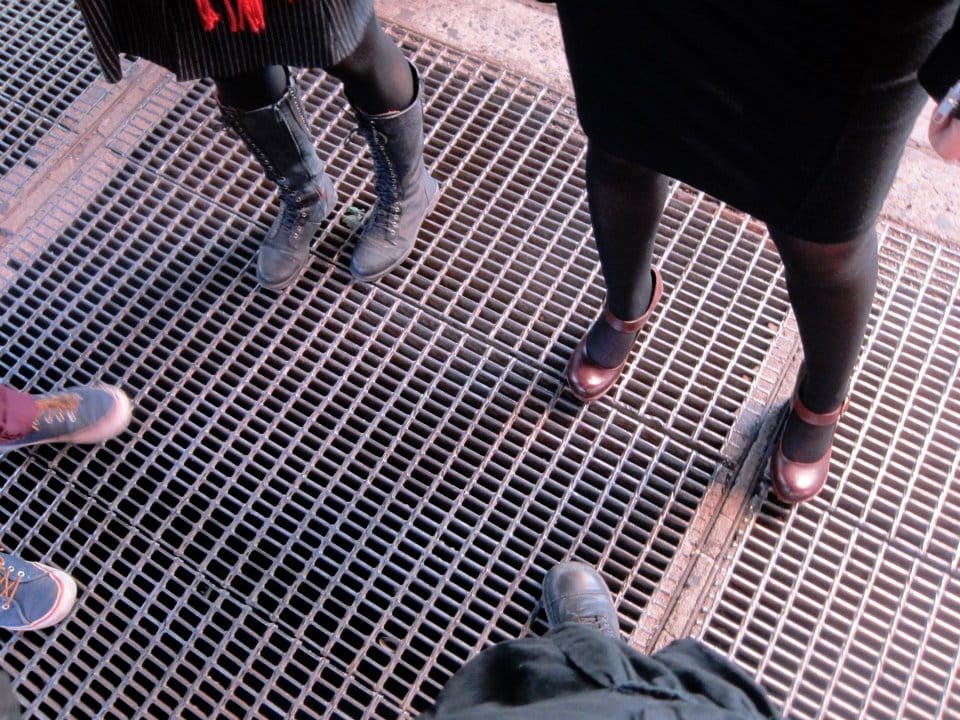
Parsoff estimated that construction on the island started at the beginning of 2015 and lasted for about a year, with new granite seating now bordering the grate. Neuhaus, who died in 2009, also created a sound installation at Dia:Beacon called “Time Piece Beacon,” which similarly is about subtly engaging visitors through the existing soundscape, causing just a slight disruption that is meant to be serendipitously found. Along with “Times Square,” in the 1970s Neuhaus experimented with other public art sound pieces in New York City, including “A New Work (Underground)” embedded in a sculpture garden grate at the Museum of Modern Art, “Walkthrough” in the Jay Street subway station, and “Round” in Alexander Hamilton US Custom House.
In 2006, Neuhaus told the New York Times that he “wanted a work that wouldn’t need indoctrination,” that allowed the visitor to “take possession of it as their own discovery.” He added that they “couldn’t do that if it were labeled ‘An Artwork by Max Neuhaus.'” In an essay in the Dia Foundation’s 2010 Max Neuhaus publication, Alex Potts added that Neuhaus was “not critiquing the aesthetic as inherently elitist but instead seeking to reconfigure it so that it would be rooted in one’s more open and freely experienced interactions with things.” In other words, it was intended to be overlooked, embedded in the urban landscape, until it emerged as a sort of personal revelation.
After being alerted of the restored access to “Times Square” by Steve O’Neill on Twitter, I decided to go experience it myself. Times Square today is quite different from 1977, when Neuhaus described it as an environment of “moving neon signs, office buildings, hotels, theaters, porno centers, and electronic game emporiums.” Although purposely finding it was not Neuhaus’s intention, it is a strange pocket where you’re consumed by the noise, which draws you across the grate as it gets louder, the tourists streaming by and Olaf snowman desperately attempting to lure you for a photograph becoming briefly distant.
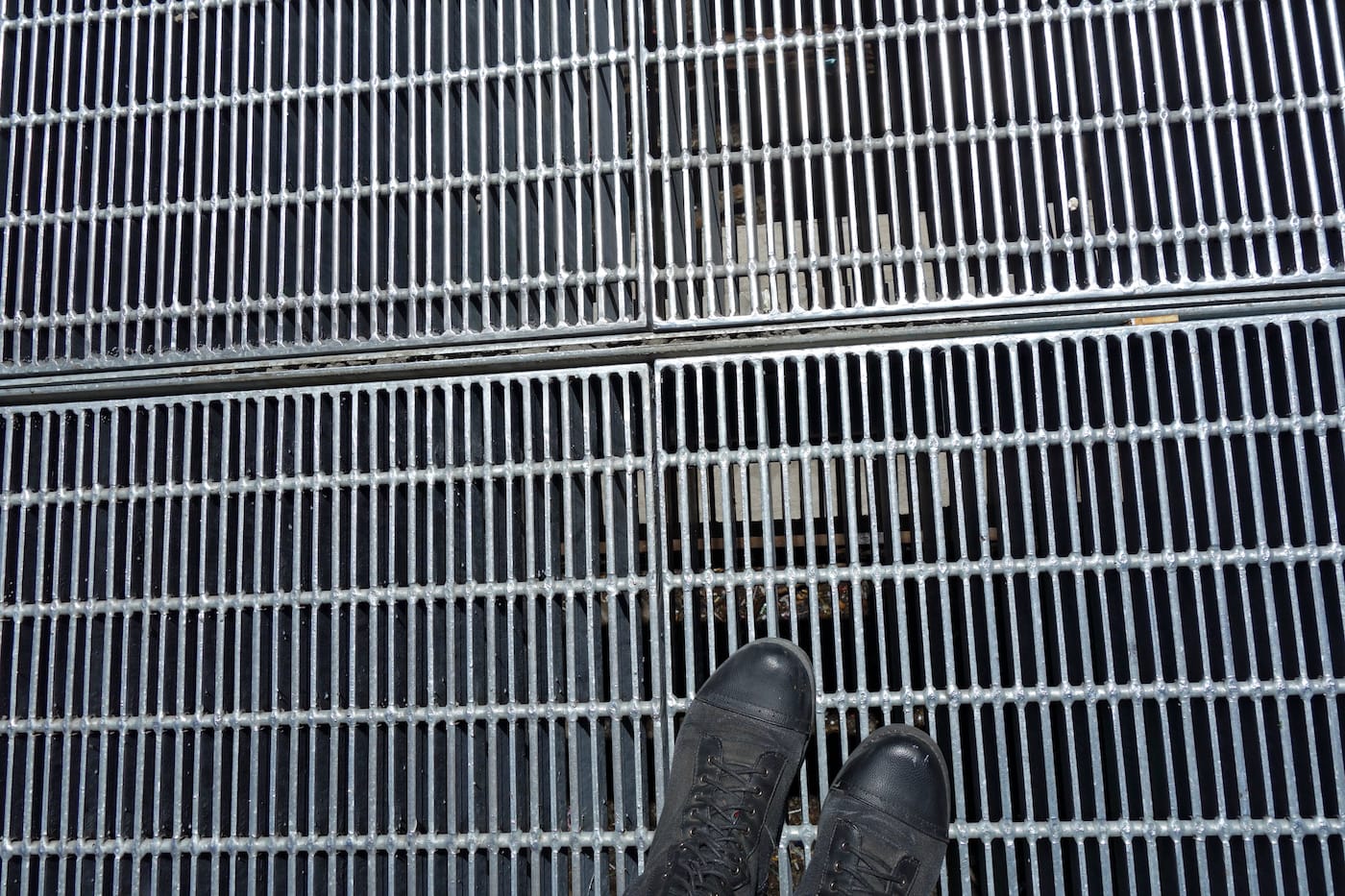
Max Neuhaus: Times Square is on permanent view at the pedestrian island on Broadway between 45th and 46th Streets in Midtown Manhattan.


